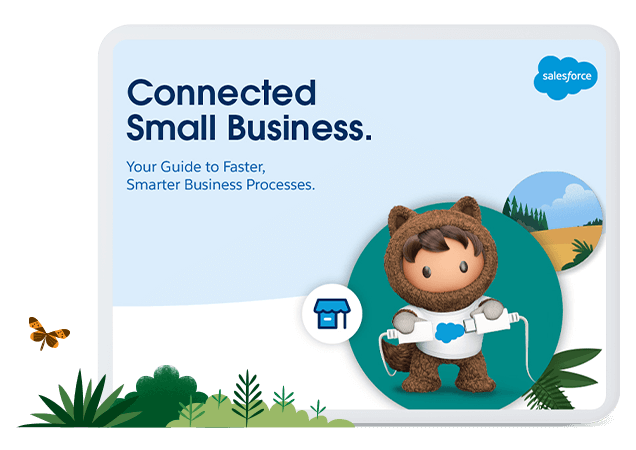Uniting functions, departments or processes in order to create business synergy has become a key concern for many SMEs looking to drive growth. After all, teams that work together are not only able to see the bigger business picture; they may be able to contribute their expertise in unexpected ways. But connecting small business departments, sharing goals and creating business synergy is easier said than done.
How exactly can SMEs encourage cross-functional collaboration that creates a sum that’s bigger than the parts? And once synergy is achieved, how can it be leveraged?
What is business synergy?
Synergy refers to the idea that a group that works together is stronger than its individual parts. Larger companies sometimes look to create business synergy through mergers and acquisitions, but synergy can also be created internally, through cross-departmental collaboration. For SMEs, this can be an important way to align goals and maximise the unique skillsets of their workforce.
For instance, an organisation may have a sales team that excels at understanding their customer’s pain points and needs, and an R&D or marketing team that excels at creating innovative products or services. If they work together, the sales team may be able to help marketing or R&D identify gaps for new products that would seamlessly fit into their customers’ lives. Or, service reps could collaborate with IT to identify important service KPIs, and then create simple drag-and-drop apps to improve the customer experience and hit their benchmarks.
Not long ago, functions and departments were often siloed by their expertise, but that’s beginning to change. Today’s companies are increasingly looking to create synergy through cross-departmental collaboration and shared goals.
Ten tips for creating business synergy through cross-departmental collaboration
Focus on proximity. Proximity may seem like an old-fashioned idea in an age of remote working, especially when surveys show that 97% of employees don’t want to return to work full-time. But there’s still something to be said about the team-building benefits that in-person working offers. Whether it’s a full return to the office, moving to hybrid work, or monthly in-persons, proximity matters.
Set business-wide benchmarks. It’s standard to set individual KPIs for functions like sales and service, but by setting business-wide benchmarks, SMEs can help the workforce see the bigger picture. If sales is struggling, marketing can step in and see if there’s a more effective way to present their product or service. Or service can try to identify opportunities for developing new products based on customer feedback.
Celebrate and commiserate as a team. By looking at the successes and setbacks of the entire organisation in a holistic manner, SMEs can encourage their employees to focus on business-wide wins, rather than individual statistics. Moreover, celebrating and commiserating together will help the workforce feel more emotionally invested in their work, rather than viewing it as transactional.
Provide a holistic view of projects and data. If everyone is working with different data sets and views of the customer, productivity will suffer. And just as damaging, so will service. By smashing siloes to unite data, small businesses can provide their teams with trustworthy data in real time. And with better data, teams can collaborate from anywhere, at any time, as well as get a 360 view of their customer.
Schedule reoccurring meetings between teams. The shift to remote working offers some fantastic benefits, including flexibility and better work-life balance. But it’s important to encourage a sense of teamwork and make sure that employees don’t start to feel isolated and disconnected. Regular meetings between teams can drive alignment, increase business synergy and foster a sense of community.
Encourage feedback across functions. When teams aren’t connected and don’t share information, it’s likely that crucial insights are falling through the cracks. Encourage different functions or departments to provide feedback on any pain points or challenges they encounter. It’s not only possible that other teams may be able to point out problems; they may even be able to develop innovative solutions.
Connect teams with digital tools and shared dashboards. The new workforce is being turbocharged by technology. AI-powered tools make it easy to automate mundane tasks, while CRM systems help SMEs better connect with their customer. And by creating shared dashboards and universal KPIs, businesses can make sure their teams have the tools they need to succeed beyond the current moment.
Look to fill skills gaps in different departments. Having agile, cross-skilled teams can enable better problem solving. For instance, if service reps are running into a productivity bottleneck, it may be possible for someone with IT skills to diagnose the issue and develop an innovative solution. Or someone with sales experience may be able to share buyer feedback and help the marketing team craft its messaging.
Encourage empathy. One of the most impactful things to come out of lockdown was the shift towards building more meaningful relationships. As the pandemic hit, businesses focused on the wellbeing of their employees and crafted more empathetic messaging when engaging with customers. This new business culture has led to a re-evaluation of priorities. By nurturing empathy, it’s easier to drive teamwork and collaboration.
Skill up the workforce. It’s never been easier to give the workforce the skills they need to succeed in an unpredictable climate. As roles evolve, so should skillsets. On-demand training platforms like myTrailhead make it easy to cross-skill and upskill workers to perform across functions. And with custom learning paths and a gamified element, myTrailhead makes learning new skills relevant and fun.
Cross-departmental collaboration can help SMEs reach their full potential
For SMEs in particular, maximising talent is an important consideration. Expertise is most valuable when it can be accessed as needed, across an entire organisation. So while there’s been a lot of talk about breaking informational siloes to get full value from an organisation’s data, it’s just as important to break ‘people’ silos to get the most out of the workforce.
But extended expertise isn’t the only advantage of business synergy, as collaboration can also contribute to a company-wide culture of productivity, innovation, teamwork and inclusivity. And with common goals and a shared vision for success, workers are more likely to feel invested in the overall success of the company, rather than just focusing on their piece of the puzzle.
To see more about how SMEs can create business synergy and enable cross-departmental collaboration, download our eBook, Leveraging Your Business Through Connected Processes.









